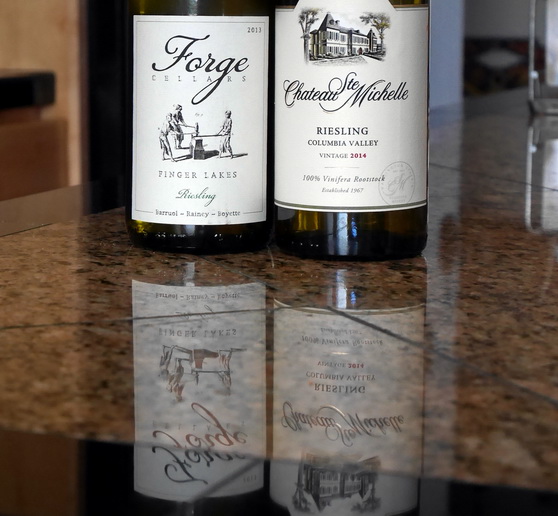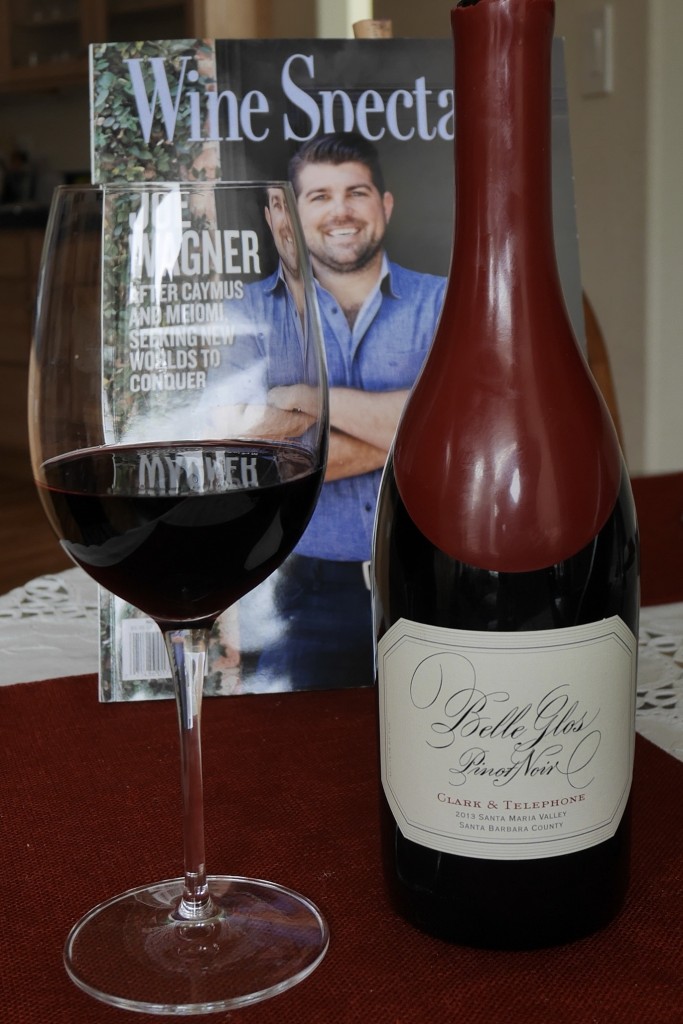The best wines cost plenty, but there are plenty under twenty
I’m in America for family reasons, so this is not a wine education trip for me. How I’d love to visit the Finger Lakes, that exciting new American Viticultural Area (AVA)in New York State just south of Lake Ontario, or the Columbia Valley in Washington on the other side of the country.
Both areas are making exciting Rieslings, we’re told, but my exploration is confined to the bottle shops of Colorado Springs, the web and wine magazines. I first heard about the Finger Lakes when Sheldrake winery won the top trophy at the 2015 International Riesling Challenge 2015 with its wild ferment icewein. Read more about the Finger Lakes here, here and here.
Washington is an older AVA on the west coast, where Riesling has become a star performer. Read more here. The 5th International Riesling Rendezvous was held here at the Ste Michelle Winery last July; it’s a cooperative venture between Ste Michelle and Dr Loosen Estate on the Mosel, and everybody who’s anybody in Riesling was there. Read more here.
Fancy Reds and High Prices
It doesn’t get much fancier than a third of the bottle covered with red wax, does it? And it’s only a $50 wine a friend had given to my brother. It so happens that the winemaker Joe Wagner was on the cover of the current Wine Spectator. The Belle Glos Clark and Telephone Pinot Noir 2014 is a well-made medium-bodied red from the Sonoma Coast that bears no resemblance to Pinot Noir in the accepted sense. By that I mean it lacks any hints of mushrooms, dank leaves, broken twigs and forest floor. Clean as a whistle, this could be a cool climate Shiraz.
Wine Spectator’s November 30 2016 issue is not about Riesling but about California Cabernet. The list of top wines struck me for two reasons: The outstanding wines scoring 97 to 95 points are expensive, ranging from $90 to $400. The average is around $200.
The second thing that struck me was the neat alignment of points and price points: as the point scores come down to 88, the prices come down to the twenties, and the list suggests an order in the wine universe that we’ve yet to find anywhere else. Maybe California Cabernet is unique in the wine world, or maybe the reviewers know these wines and their price levels too well.
High prices for top reds are becoming more common down under as well, as this list of 2 dozen wines with price tags over $400 shows. That’s not the world we live in, or drink in, and there are plenty of good wines made in the USA in the price range we explore for bargains. Chardonnay is still king among whites, occupying most of the shelf space in bottle shops, and cheap reds tend to be Cabernet blends.
Down to Earth
A perfect example is Francis Ford Coppola’s Diamond Collection Claret 2014, a Bordeaux blend of 77% Cabernet Sauvignon, 19% Petit Verdot, 3% Cabernet Franc and 1% Merlot. The grapes come from the Napa and surrounding areas. The wine is perfectly blended and well-judged, medium-bodied, smooth and satisfying, fruit and gentle oak in perfect balance. I scored it at 93 points, while local reviewers give it 90 points.
90 points from US reviewers is actually a pretty high score. Yes, it’s hard to believe that we have different scoring systems in the international world of wine, but the American system uses far more of the 100 point scale than we do – see below.
The Coppola red is about US$15, and the white Coppola Pavillion 2014 is about US$13. Both are under AUD$20, in other words. The Chardonnay reminded me of the crowd-pleasing Toper’s 2013, with its opulent fruit and creamy oak. Very polished. 92 points.
La Crema Chardonnay2014 from Sonoma is another $15 wine, and a pretty classic Chardonnay with subdued white peaches and cashews woven into a pretty fine cloth. It’s a little less obvious than the Coppola, a bit more focused, more elegant and a touch more complex. 93 points. So much for the notion that California wines are too expensive.
Sonoma Cutrer Chardonnay 2014 – Just over $20, from Russian River serves up more pineapple than stonefruit, and it’s too sweet for my liking, pretty disappointing since I expected more from Russian River.
Mer Soleil Reserve Santa Lucia Highlands Chardonnay 2014 is a US$25 wine at Costco and $30 at other places, which makes it a $40 wine in our money. It didn’t impress me though, even if it clearly had the kitchen sink of winemaking thrown at it. This wine was also made by Joe Wagner, it turns out, in the same Santa Lucia Highlands as the Belle Glos Pinot Noir, and once again you’d be hard-pushed to pick this as a Chardonnay since the fruit is in the pineapple and mango spectrum. There’s nice oak here, well integrated but not enough to save the wine. 90 points.
Rieslings are even better value: You can buy the basic Ste Michelle Riesling for $7.20 in a dozen from the vineyard (if you join the club). This is an off-dry wine, not too off mind you, with a hint of Germanic softness, quite full-flavoured (12%) and good drinking on its own or with Asian foods. I’d give it 90 points. Serious value here.
The Forge Cellars Riesling 2013 is a dry Riesling from the Finger Lakes, more serious and more expensive at $20. It’s different from Aussie Rieslings, round and rich on the nose, more ripe apples than limes on the palate, not much talc but some minerals and a dry finish. Not a Riesling to worry the makers of our better types. 91 points.
 Two American Rieslings aren’t enough to draw conclusions from, but that was all I could find in Colorado Springs. The Chardonnays show the experience Americans have making this style, and the commercial wines we tried were pretty slick and convincing while the fancier wines were not. Strange that.
Two American Rieslings aren’t enough to draw conclusions from, but that was all I could find in Colorado Springs. The Chardonnays show the experience Americans have making this style, and the commercial wines we tried were pretty slick and convincing while the fancier wines were not. Strange that.
The reds were a mixed bag as well. The Apothic Red 2014 (no image) is an easy-going, smooth and round blend of Zinfandel, Syrah, Merlot and Cabernet Sauvignon. It’s fruit-driven and easy on the gum and $10s. 88 points.
The Cloudveil Pinot Noir 2014 from Oregon (US$25) showed some of those Burgundian characters that were missing in the Belle Glos Pinot Noir, but it lacked focus, depth and conviction. 89 points.
The Rutherford Hill Merlot 2013 showed that this vintage was good for Merlot, with subdued fruit balanced by a strong backbone of fine acid and tannin. This $20 wine got better and better over 3 days, always showing distinct touches of class. 92 points
Point Scoring
This is the scoring system used by Wine Spectator, which is similar to that used by the Wine Advocate.
- 95-100 Classic: a great wine
- 90-94 Outstanding: a wine of superior character and style
- 85-89 Very good: a wine with special qualities
- 80-84 Good: a solid, well-made wine
- 75-79 Mediocre: a drinkable wine that may have minor flaws
The story is similar to ours from 90 points upwards, then it diverts. Wines that score less than 90 down under are hard to sell, and I can’t recall the last time I saw a score of 85 points or less from our reviewers. In the USA, these are solid, well-made wines.
Kim



